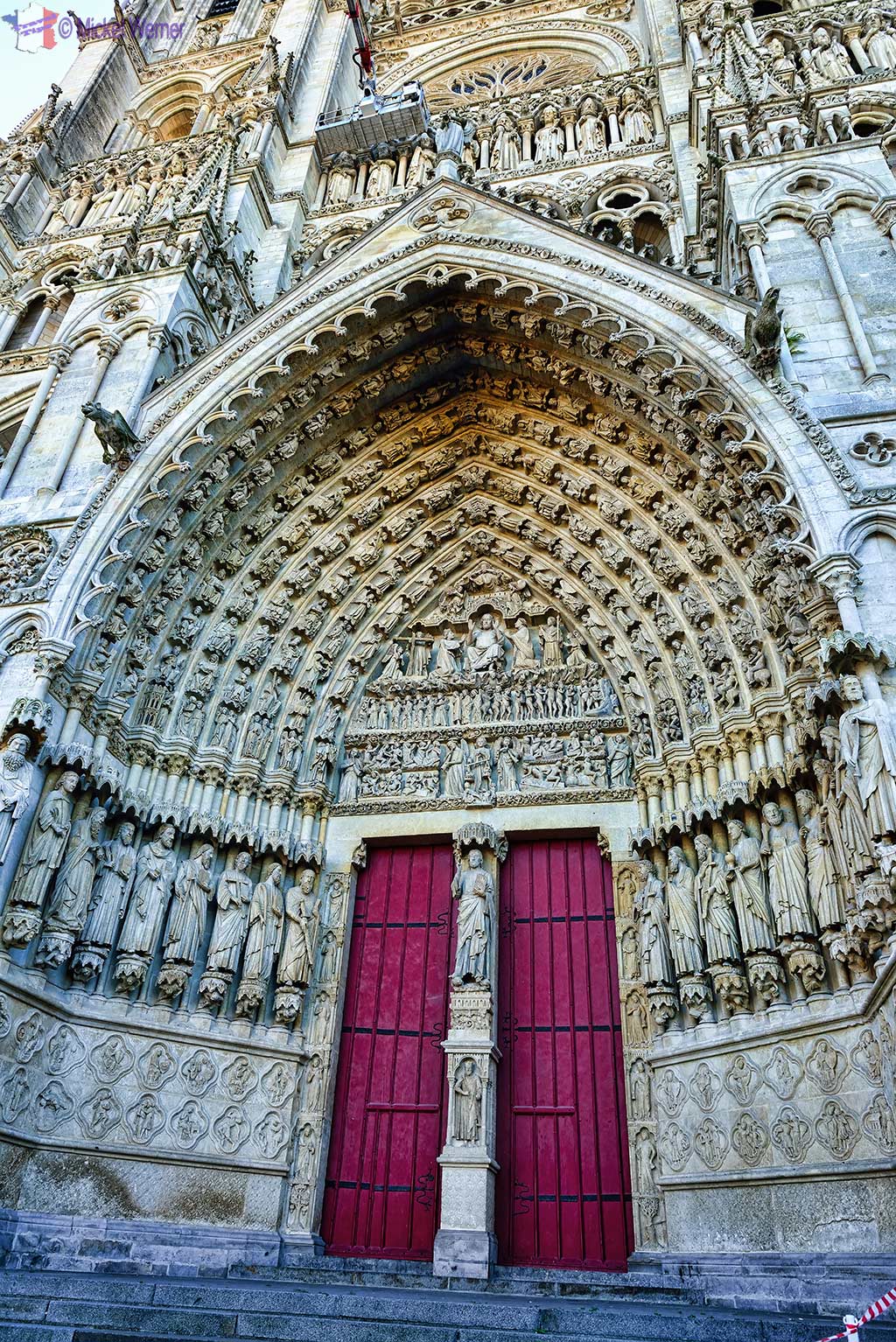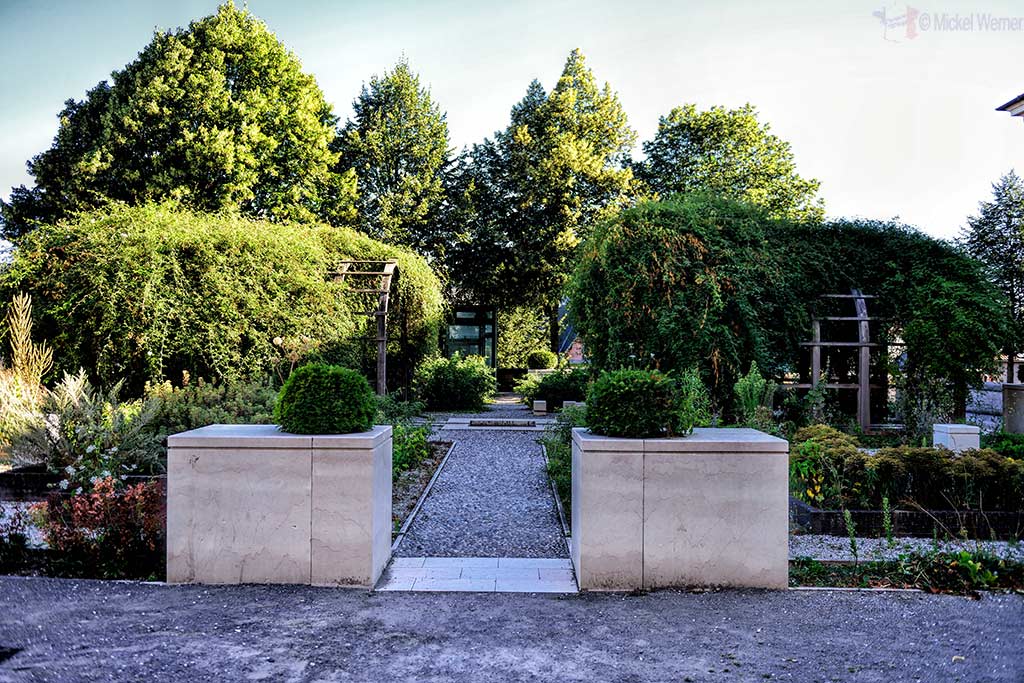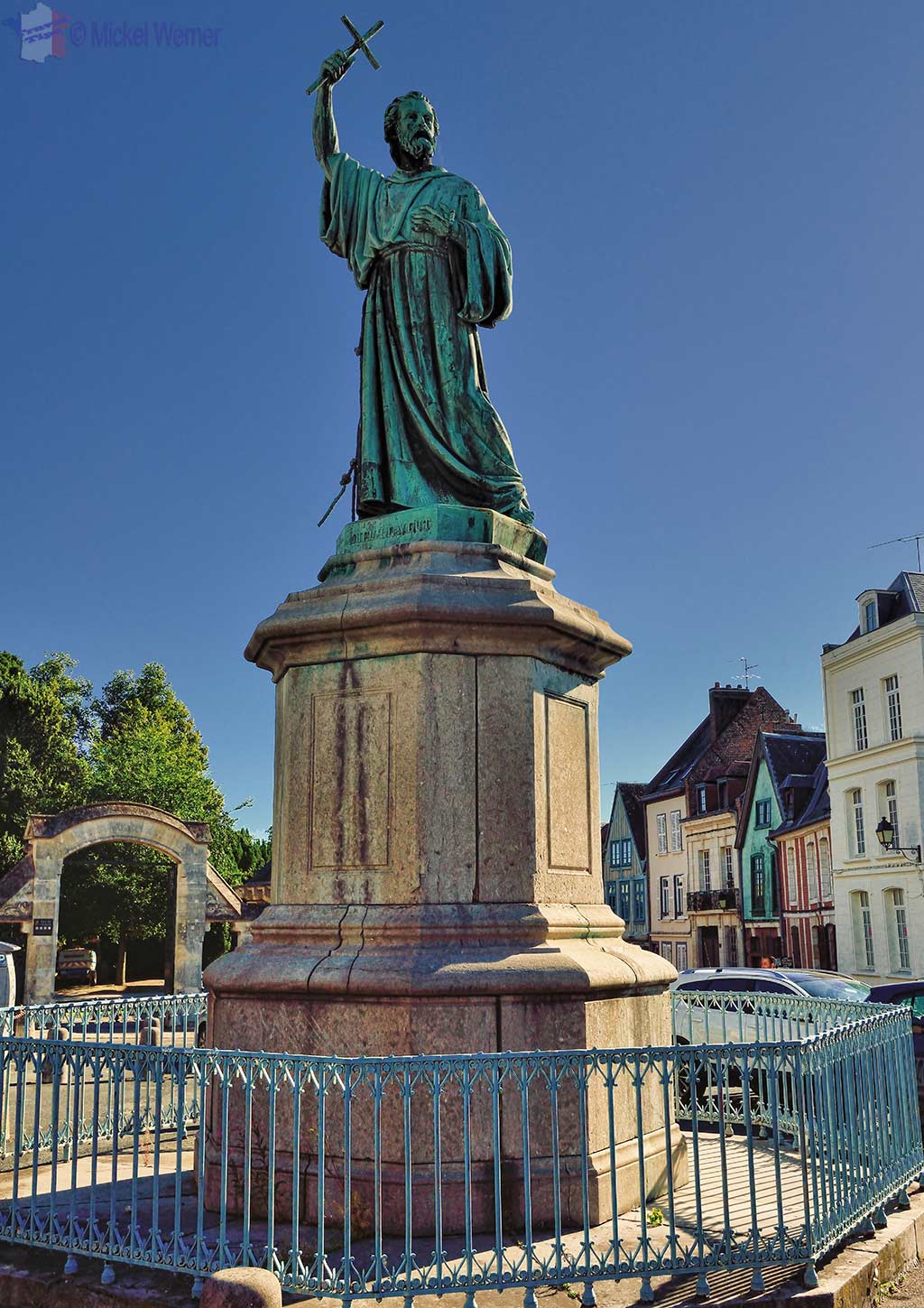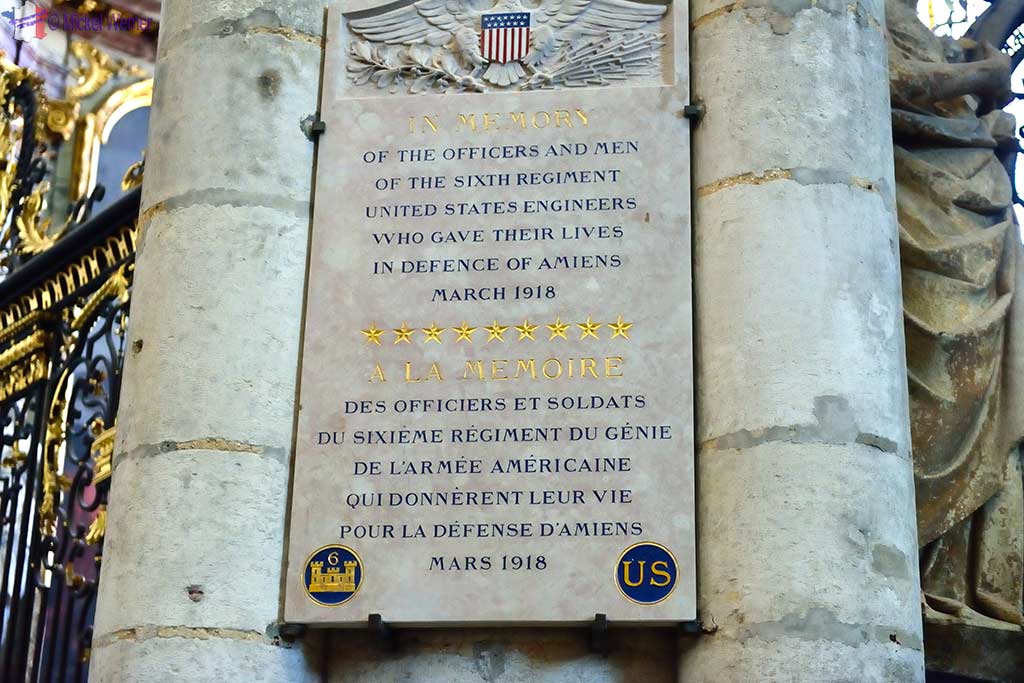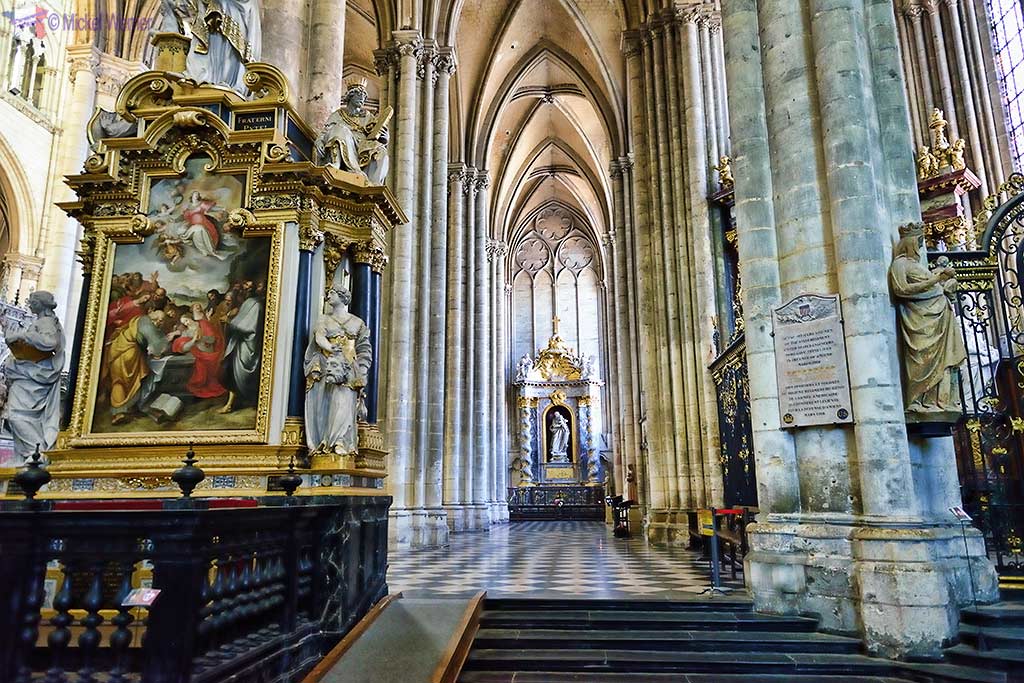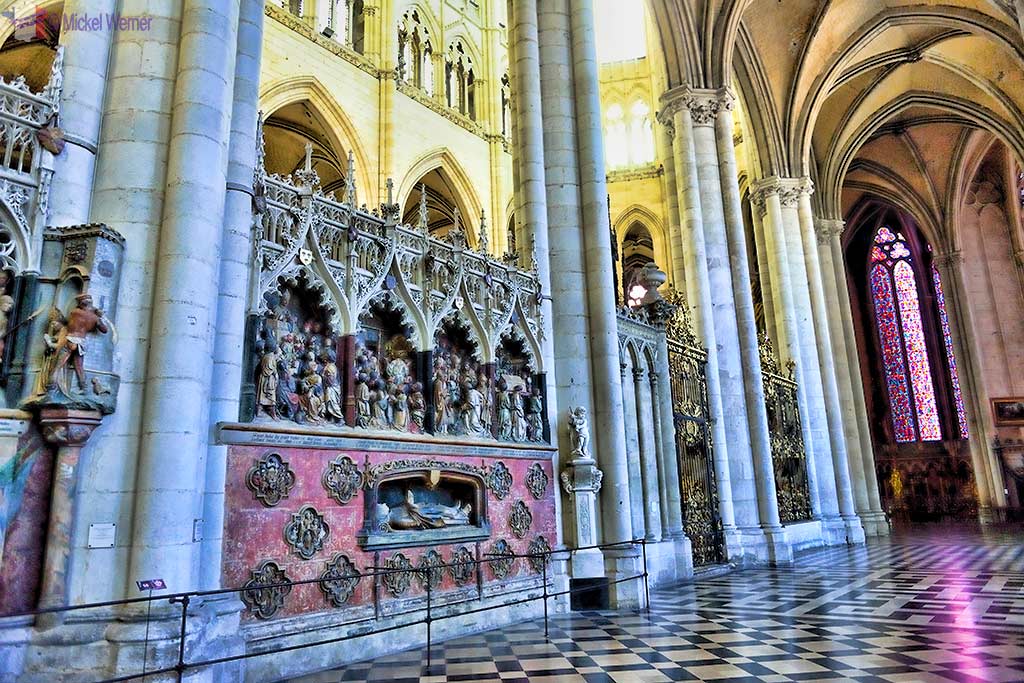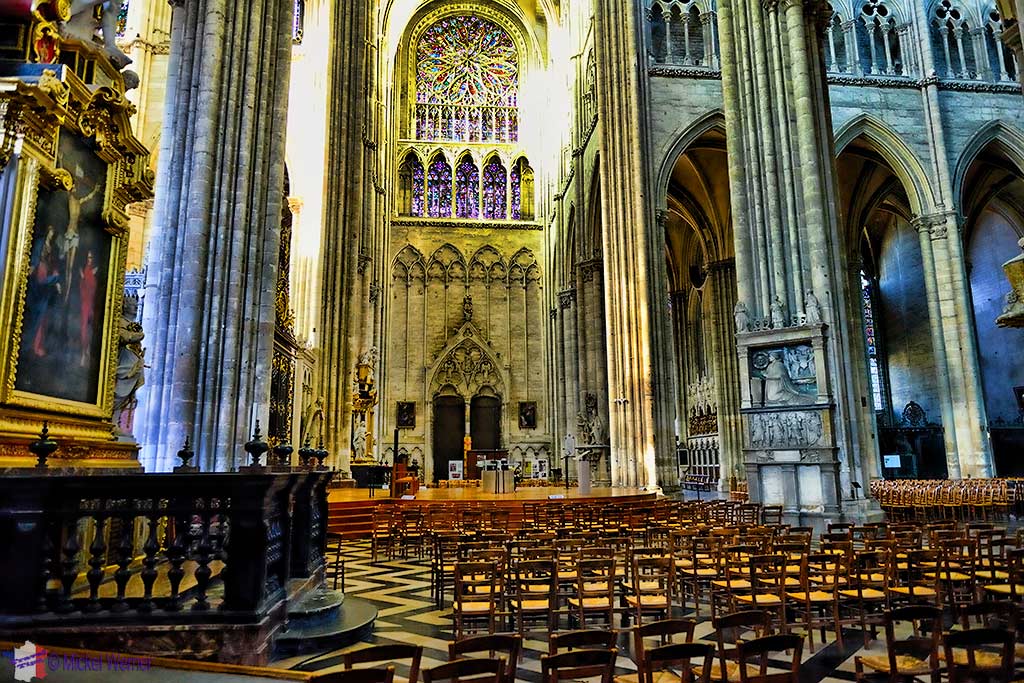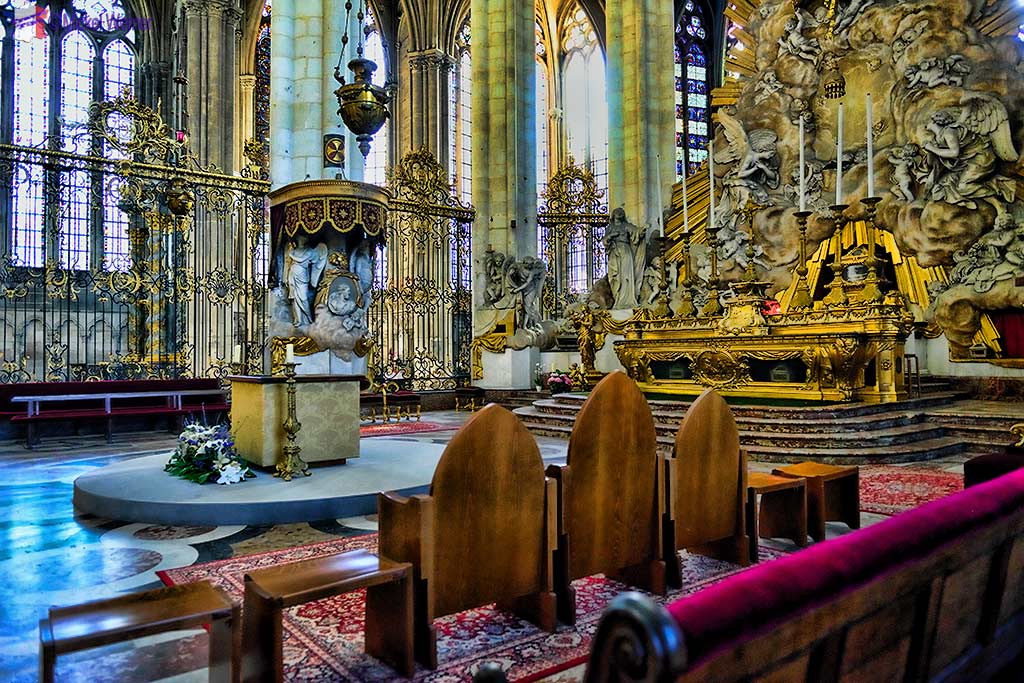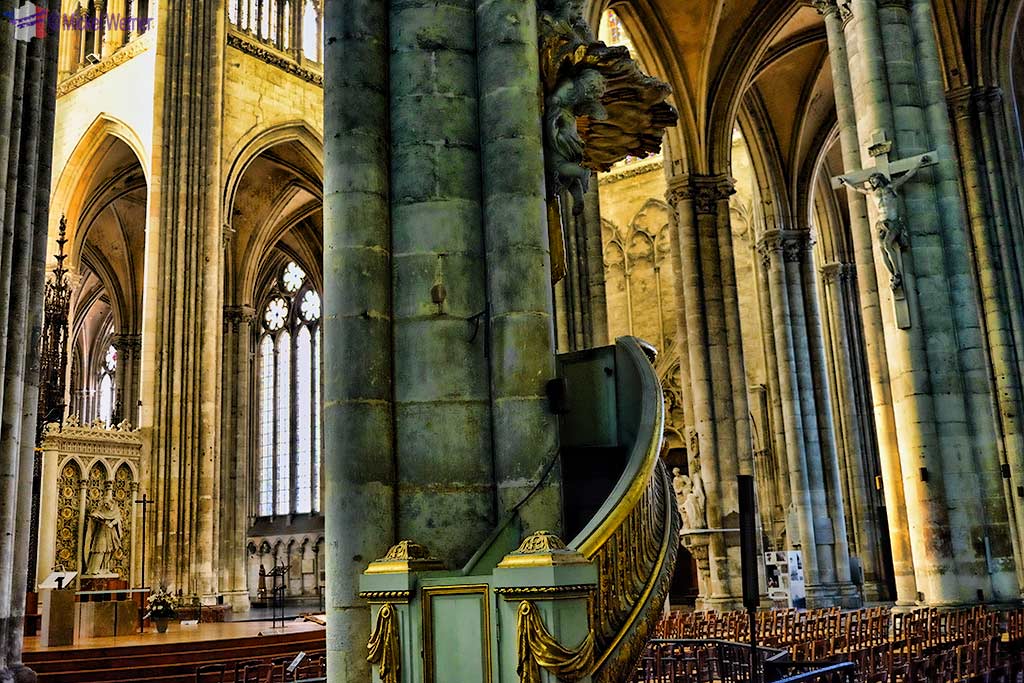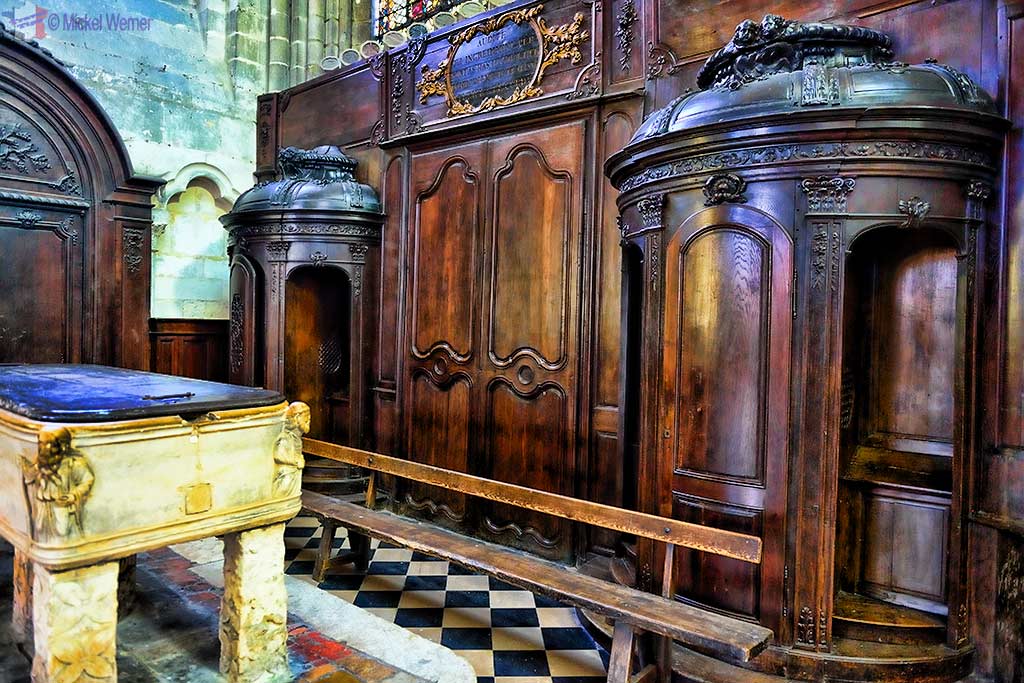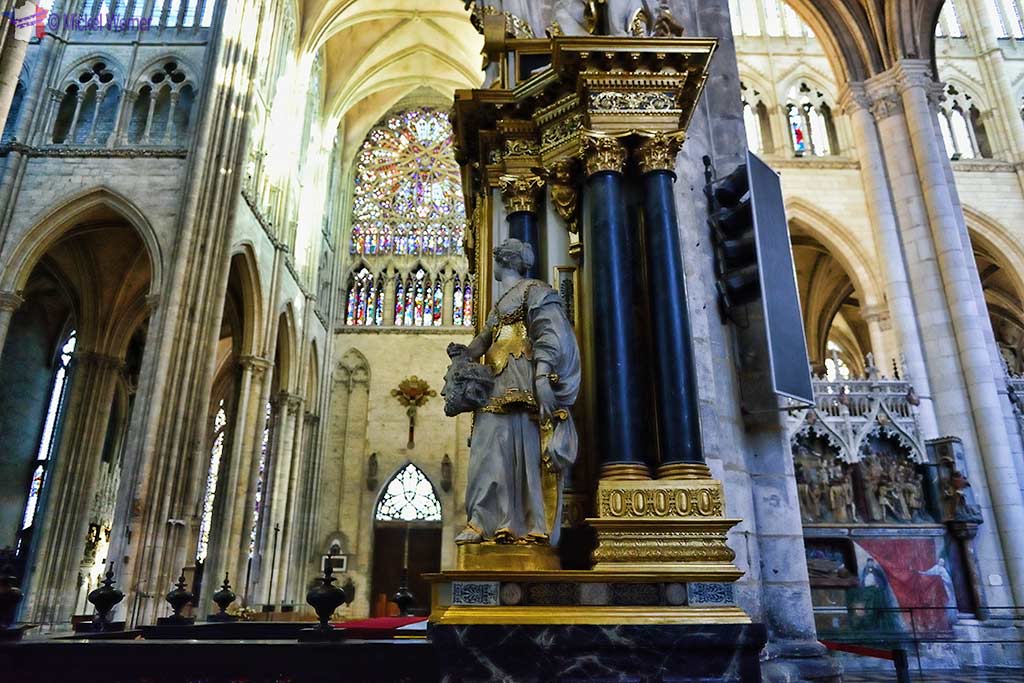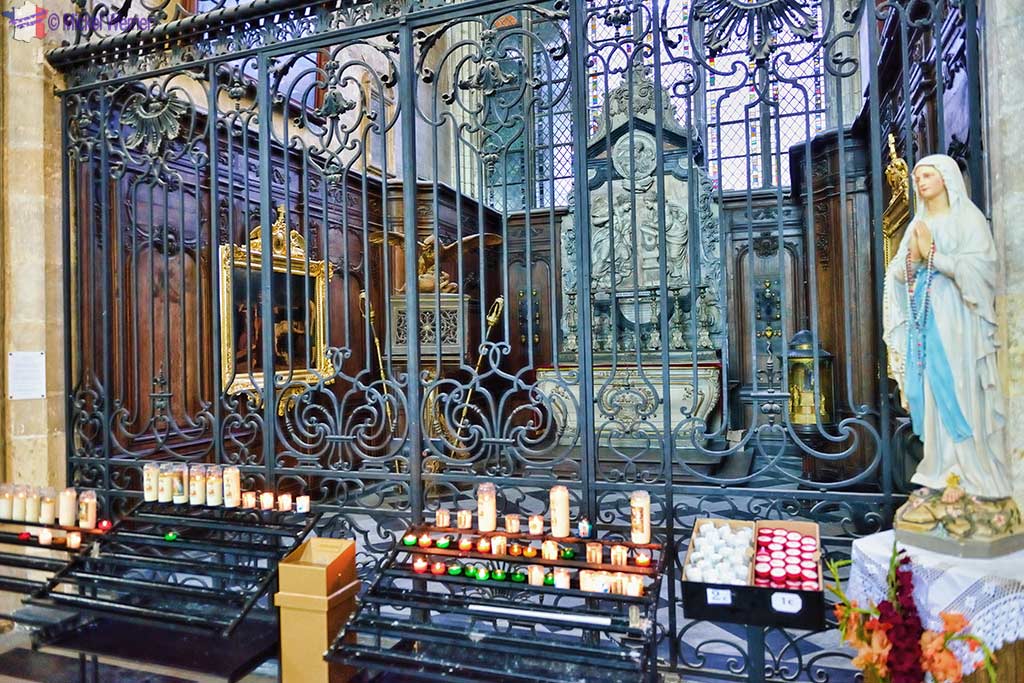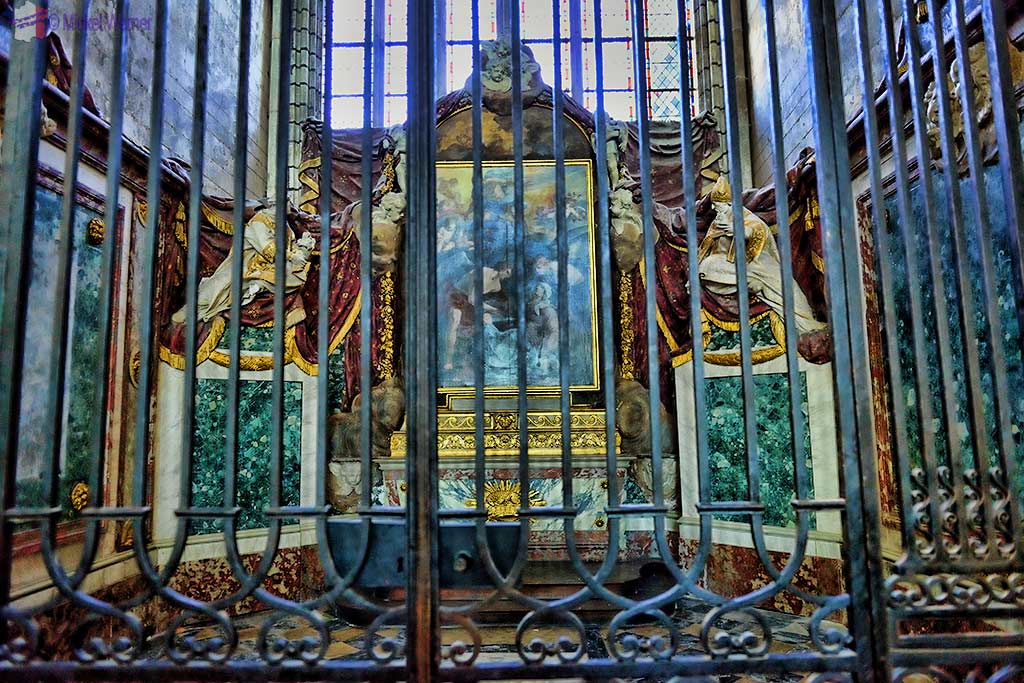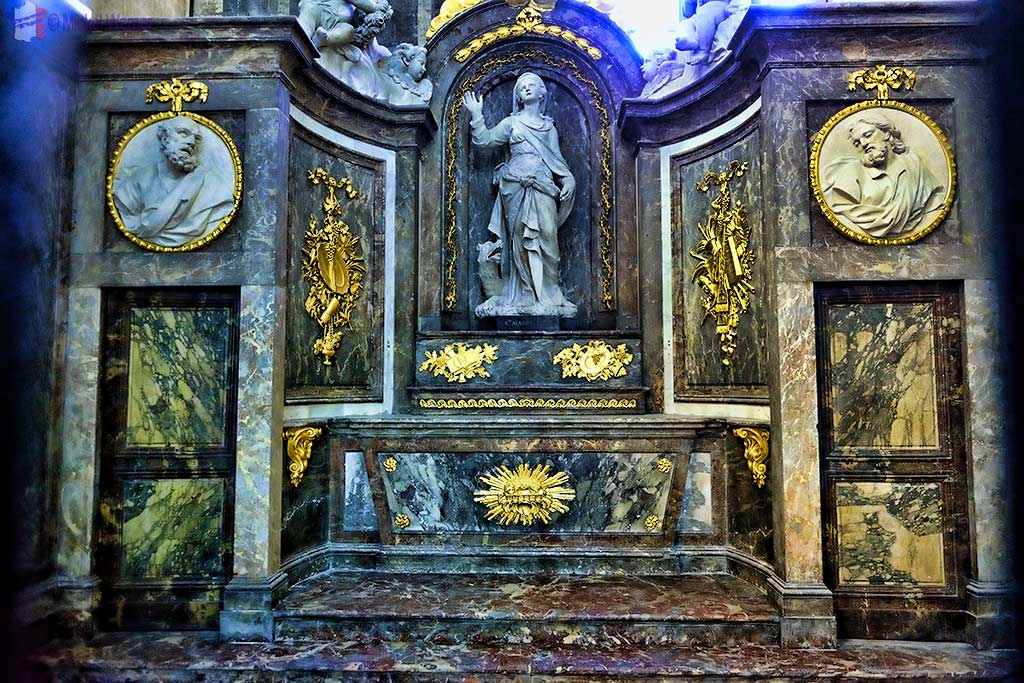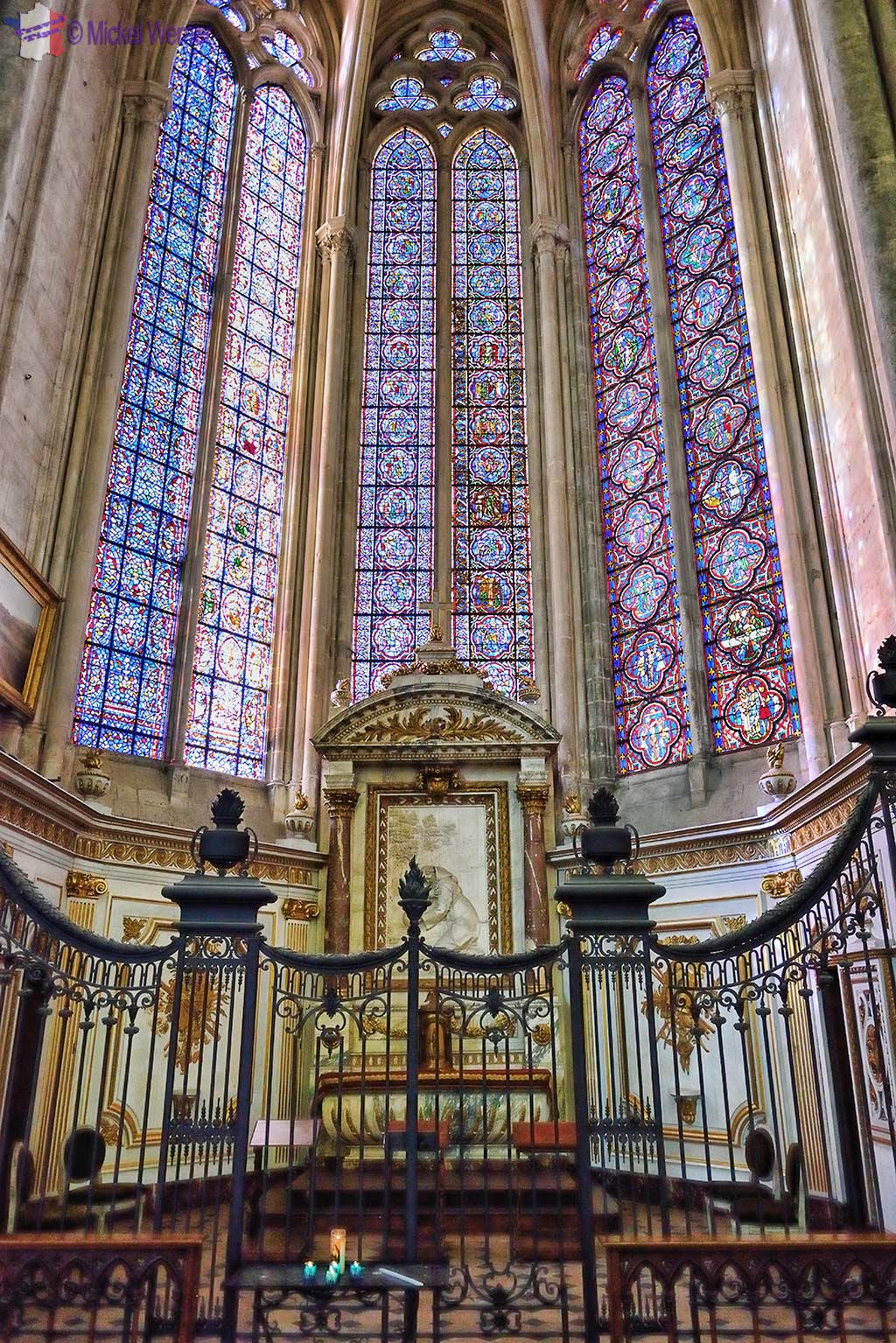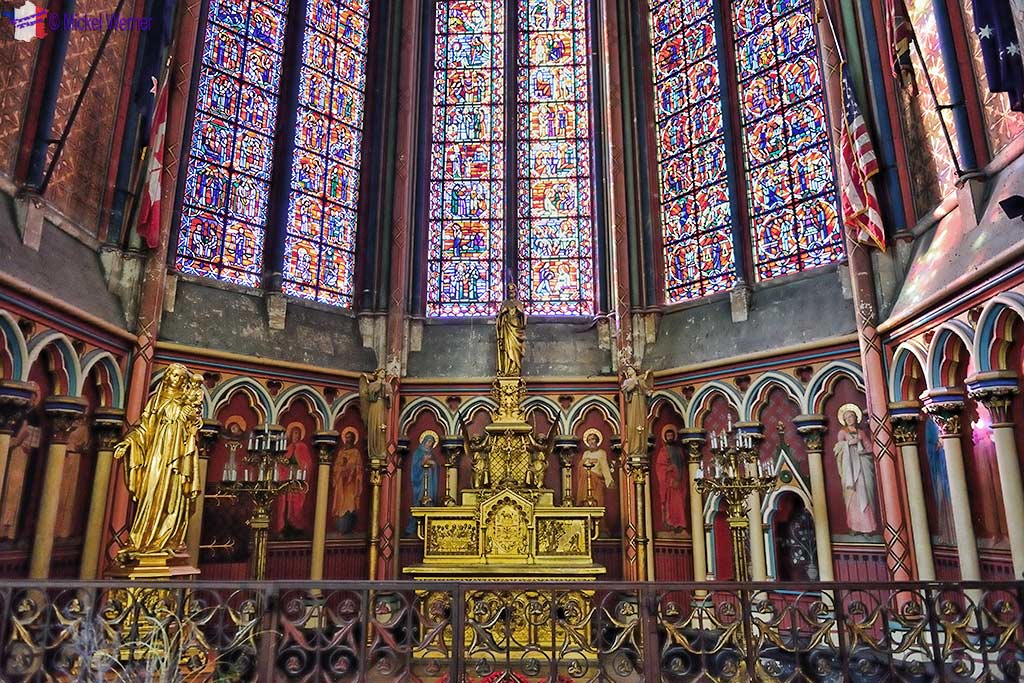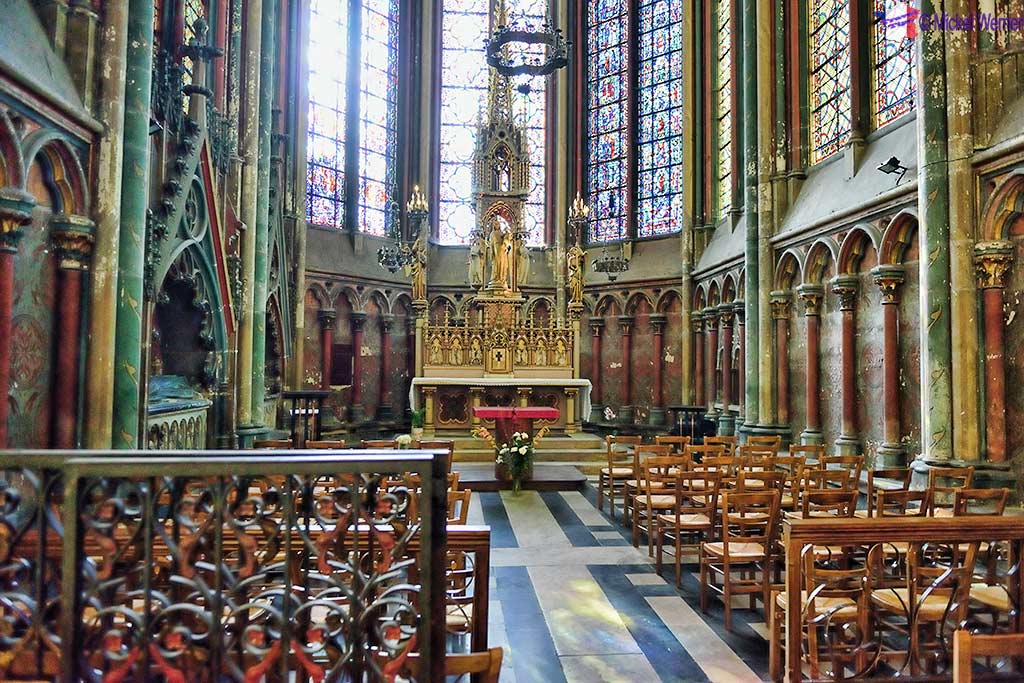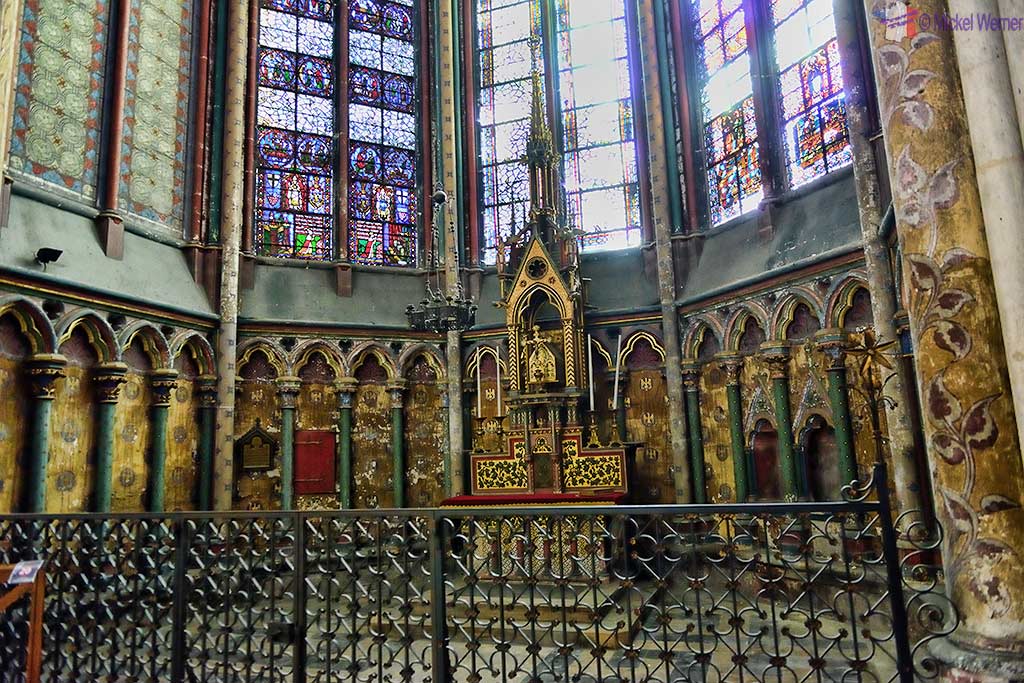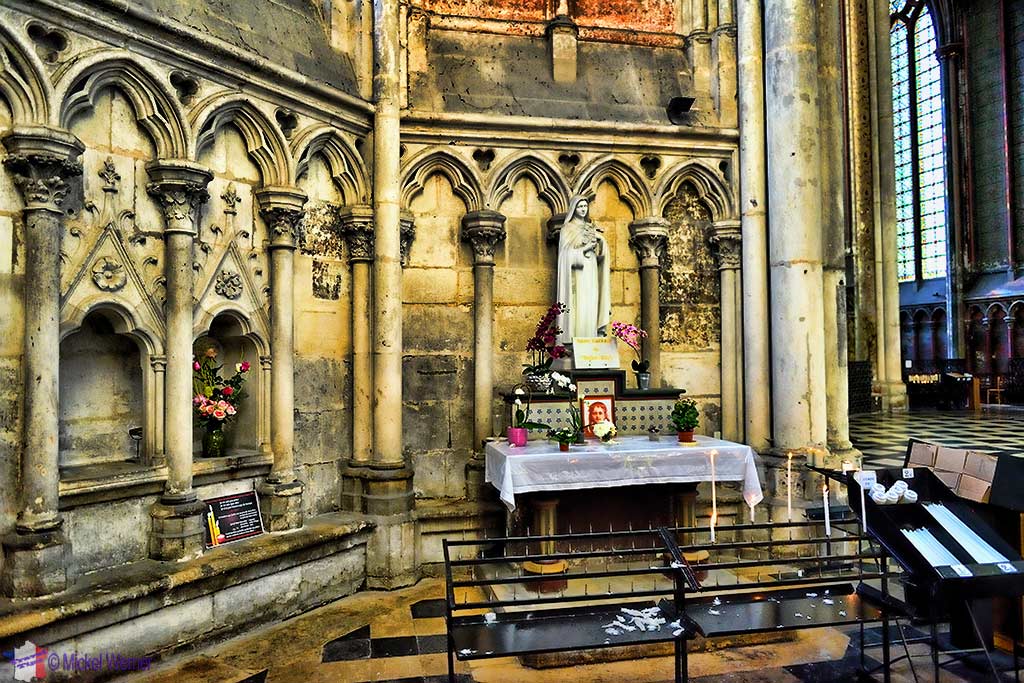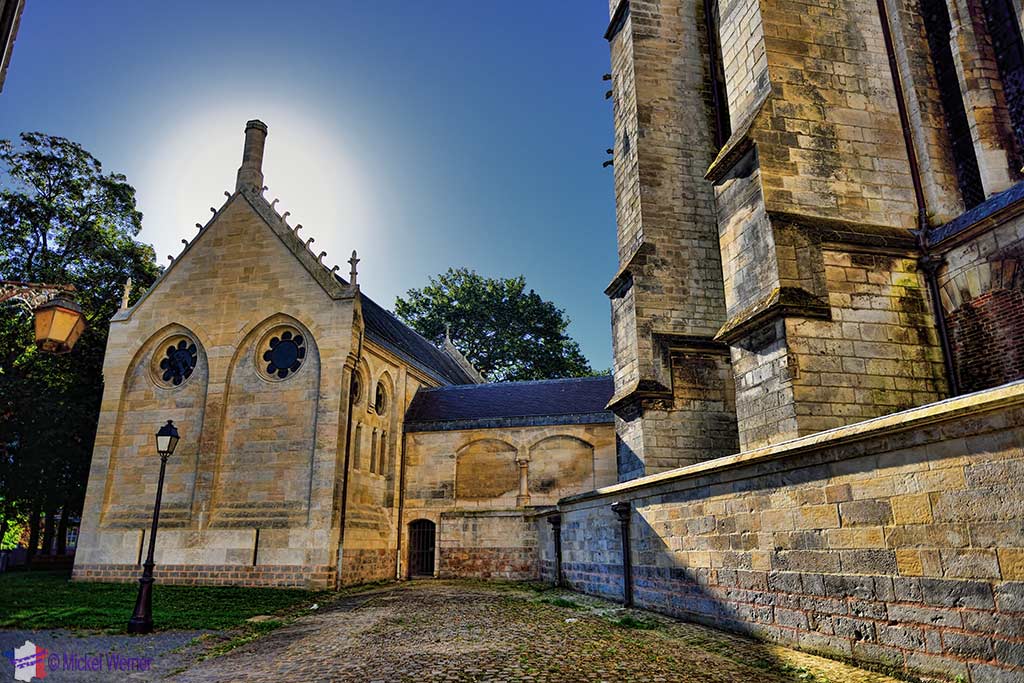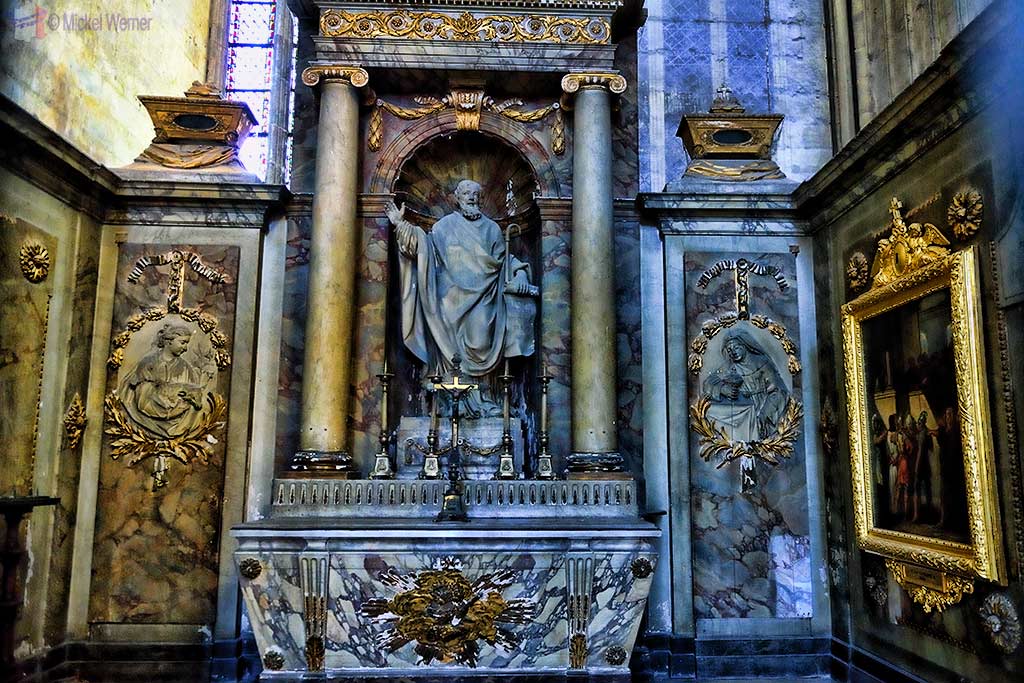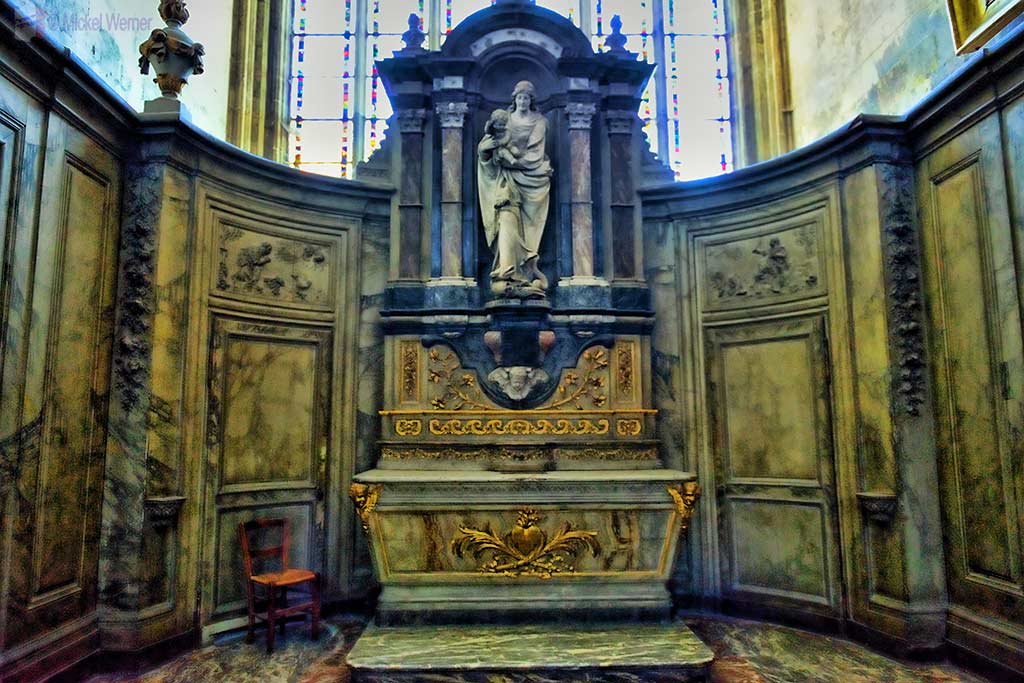The one thing that Amiens is famous for, worldwide even, is its enormous cathedral. It is called the “Basilique Cathédrale Notre-Dame d’Amiens” (Basilica of Our Lady of Amiens Cathedral), or for short, the Notre-Dame (but not to be confused with the Paris one).
The cathedral forms part of one of the French legs of the Santiago de Compostela pilgrimage route.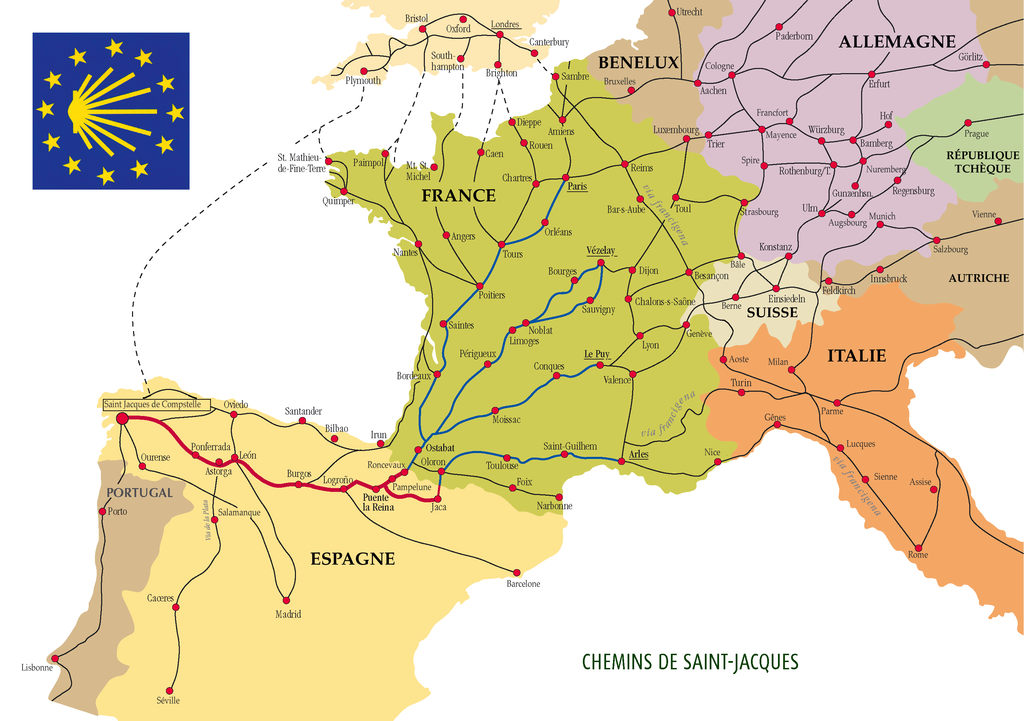
Santiago de Compostela pilgrimage routes
The Amiens cathedral is world’s biggest gothic-style cathedral, and also world’s 19th biggest cathedral. It is France’s tallest one, and it has the biggest interior of any cathedral in France.
The building of the cathedral started in the year 1220 and was finished in the year 1270 (although these kind of buildings are never finished). But the cathedral started life as a simple chapel in the 4th century. It was expanded in the 7th century, but in 850 the vikings burned it down.
After it was rebuilt, the vikings came back and burned it down again in 1019 and again in 1107. Then in 1218 it was demolished totally, leaving nothing by rubble.
There are three main entrances to the cathedral, the right one is called the “Last Judgement” door.
The workmanship is very ornate and detailed, with 22 life-size statues (mostly kings and queens) at the door. In total, between the three doors, there are 52 big statues and countless smaller ones.
On the cathedral’s grounds, quite at the back, there’s even a nice and very quite park. The park is called the “Parc de l’Évêché d’Amiens” (bishoprics’ park). It was created in 1991 and spans all the way to the back towards the marshes and floating gardens..
The rear of the cathedral is also very impressive in its size. The spires stand tall at 112.70 meters (369.8 ft).
Behind the cathedral is a small parking area, and in the middle of the cars, you’ll find this statue of Peter the Hermit, an Amiens based priest who became a key figure during the first crusades.
There are two main towers in front of the cathedral, measuring 112.70 meters .
Inside the Cathedral of Amiens
Inside the cathedral you’re shocked by how big it really is.
The inside is 200,000 cubic metres (260,000 cubic yards) or 7,700 square meters (about 83000 square foot) of floor space. There are 126 pillars supporting the whole. On several of these pillars you’ll find these kind of signs:
These are not the only two nationalities being thanked for their sacrifices during WWI (and also WWII); there are plaques for Australia, Newfoundland, UK, Ireland and Canada.
You can see where the sign is hung on your right of the above photo. The chapel on the left is the Chapelle du Pillier Rouge (the chapel of the red pillar). At the far end of the photo you can see the Chapelle Mere-Dieu Anglesque or Notre-Dame Anglette, formerly known as the Saint-Joseph chapel.
Here is the chapel up close. The chapel was built in 1291.

There are several tombs present inside the cathedral with the remains of saints, bishops and even the alleged head of John the Baptist (which was the reason to build the cathedral in the first place), though the head was later “lost”. The tomb above is that of Jean-Baptiste-Marie-Simon Jacquenet, Bishop of Amiens.
Above is the tomb of Adrien de Henecourt, a nobleman and religious figure involved in the cathedral’s life from 1490 to 1529.
Seating areas are to be found on three sides of the cathedral.
In the rear of the cathedral are the stalls and choir area.
The pulpit, baroque style made out of marble and gilded wood, is decorated with the three female forms representing Faith, Hope and Charity.
Several parts of the cathedral have confessional booths, but none are pretty and old fashion as these.
There are hundreds and hundreds of statues to be seen in (and outside) the cathedral, depicting all sorts of religious life and personalities that have lived and affected the cathedral over the centuries.
The one above tells the story of Saint Jacques (James, son of Zebedee, one of the 12 apostles) and Hermogene the Magicien.
The Chapels
The cathedral is big, so you can expect a lot of chapels, and you’ll not be disappointed. I counted 22, but I’m sure I missed a few hidden away. Here are most of them:
The Saint-Christophe chapel built in 1375.
The chapel of the Annunciation, built around 1325.
This is the Saint-Nicolas chapel with its wooden confession booths. The chapel was built around the year 1300.
The chapel of Saint-Etienne, built around the year 1300.
The chapel dedicated to Sainte-Marguerite, built in 1292.
The conversion of Saint-Paul built in 1233.
The Saint-Nicaise chapel built in 1240.
The Saint-Jacques-Majeur (James, son of Zebedee aka James the Greater or James the Great) chapel, built in 1240, with flags from Australia, New Zealand and the USA presented after WWI by their respective governments.
The stained-glass windows were made in 1932.
The Notre-Dame-La-Drapiere chapel built in 1240.
Next to it is the Saint-Augustin-de-Cantorbery (Bishop Augustine of Hippo) chapel built in 1240. Napoleon III in the 1700’s helped finance the restoration of this chapel.
The chapel dedicated to Saint John the Baptist and built in 1240.
The Saint-Quentin chapel of the Amiens cathedral was built in 1240, but partially moved to make way for this:
This door leads to the winter chapel (also known as the “chapelle des catechismes”), which is located alongside the cathedral:
The winter chapel is a reasonably large chapel but when I was there, they were holding a mess, so I did not want to bother them with the sound of a clicking camera.

This is the Notre-Dame-de-Pitie chapel with the Virgin Mary.
The Sainte-Agnes (aka Sainte-Brigitte, in English Agnes of Rome) chapel built in 1296, but the statue was replaced by one of Saint-Firmin
The Saint-Louis chapel was built in 1297.
The Saint-Honore (in English: Honoratus of Amiens) chapel of the Amiens cathedral was built around the year 1300.
The Saint-Michel (archangel Michael) chapel was built between 1300 and 1325.
The Saint-Jean-L’Evangeliste (John the Apostle) chapel was built in 1375. The chapel contains the heart of the Bishop who created the chapel, Jean de la Grange.
Summary
The cathedral in Amiens is deservedly the centre point of tourism in Amiens. It’s enormous and incredibly well built (considering this was made in the 1200’s).
The decorations and many chapels make this a true masterpiece, deserving the UNESCO World Heritage Site label. If you spend a minute per item, you’ll be spending a day there.
You can find out more about the cathedral and its opening times, by clicking here to access the cathedral’s web site.
Related Posts
- 10000
 The gothic Saint-Pierre (Saint Peter) cathedral in Vannes, Brittany is quite beautiful and merits a visit. Building started in the 11th century and finished in the 18th century.
The gothic Saint-Pierre (Saint Peter) cathedral in Vannes, Brittany is quite beautiful and merits a visit. Building started in the 11th century and finished in the 18th century. - 10000
 The building of the cathedral of Nantes, named the Saint-Pierre-et-Saint-Paul de Nantes, started in the 15th century, and like most cathedrals, work lasted for hundreds of years. In this case, the cathedral was officially complete 457 years after it was started. However, this is the 3rd cathedral to be built…
The building of the cathedral of Nantes, named the Saint-Pierre-et-Saint-Paul de Nantes, started in the 15th century, and like most cathedrals, work lasted for hundreds of years. In this case, the cathedral was officially complete 457 years after it was started. However, this is the 3rd cathedral to be built… - 10000
 The Cathedral in Bordeaux, named the "Saint-Andre de Bordeaux" (Andre being French for Andrew) was started in the 12th century. It was built on top of a small church that itself was built in the 3rd century. It's location (right next to the City Hall, courts and close to the…
The Cathedral in Bordeaux, named the "Saint-Andre de Bordeaux" (Andre being French for Andrew) was started in the 12th century. It was built on top of a small church that itself was built in the 3rd century. It's location (right next to the City Hall, courts and close to the… - 10000
 Lisieux is a very religious city with, for a small city, both an enormous basilica AND a big cathedral. Lisieux was the home to three saints, which might explain the presence of so many big religious buildings and institutions (like the Carmel monastery). But the Saint-Pierre cathedral is not exactly an…
Lisieux is a very religious city with, for a small city, both an enormous basilica AND a big cathedral. Lisieux was the home to three saints, which might explain the presence of so many big religious buildings and institutions (like the Carmel monastery). But the Saint-Pierre cathedral is not exactly an… - 10000
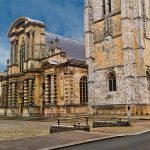 The recently (in 1974) appointed cathedral of Le Havre, the "Cathedrale Notre-Dame du Havre", is nothing to write home about. Outside it is interesting, but inside it's pretty drab. Its only saving grace is that it has an incredibly beautiful and imposing organ. It is also the oldest structure in Le Havre…
The recently (in 1974) appointed cathedral of Le Havre, the "Cathedrale Notre-Dame du Havre", is nothing to write home about. Outside it is interesting, but inside it's pretty drab. Its only saving grace is that it has an incredibly beautiful and imposing organ. It is also the oldest structure in Le Havre…


